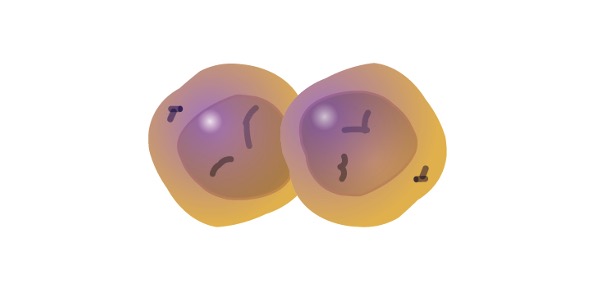Table of Contents
Notochord Definition
The notochord is an elastic rod that runs the length of Chordate creatures and provides stiff support. The notochord is replaced by the vertebral column in the more evolved Chordates, the Vertebrates, and becomes the cartilaginous material between the vertebrae. The notochord of a lancelet may be seen in the image below. Lancelets are among the most basic chordates.
What is Notochord?
The notochord permits muscles to connect and expands the length of the organism. The lancelet may now swim in short spurts. All Chordate creatures, including the lancelet, generate a notochord at some time in their lives, albeit they may lose it later.
Tunicates, for example, are marine creatures that cling to the ocean’s bottom and filter food. The notochord is not needed by the adult tunicate, but it is used by the larval tunicate to swim to possible settlement locations. Other animals do not develop a vertebral column and maintain the notochord throughout their lives.
Invertebrate chordates are the name given to these creatures. Lancelets, tunicates, and even huge fish like sturgeon and coelacanth belong to this category. The notochord in these big fish may be as long as they are (about 3-4 feet) and quite thick (almost half an inch).
This massive notochord is used by these fish in the same way that vertebrates use their spine. The only major distinction is the material used and the way it protects the spinal cord. The bone vertebrae develop around the spinal cord in vertebrates, protecting it from all sides.
Because the spinal cord lies between the notochord and the skin, animals with only a notochord lack this protection. To protect their spinal cord and notochord, animals like the sturgeon and coelacanth have developed armoured plates and thick skin.
The notochord is converted by vertebrates into the cushioning intervertebral discs, which keep the vertebrae from colliding. However, by the time a person is about 4 years old, the original notochord in the spine has been completely replaced with different materials.
Notochord Structure
The notochord is made up of a variety of structural components, including glycoproteins, and, in many respects, mimics cartilage. The cross section of the notochord appears as a sequence of concentric rings when sliced across it and seen under a microscope.
The notochord is made up of layers of various sized rings that surround each other and are made up of diverse structural molecules that give the notochord both strength and flexibility. Glycoproteins and other structural molecules protrude from the notochord’s widely separated cells.
These cells each have a huge vacuole that may be pressurised. When the cells are under pressure, they push on each other and the surrounding structural elements. This results in a more rigid notochord, which is essential for fast swimming.
Notochord Function
The notochord’s robustness makes it an excellent framework for attaching muscles to. Muscles require attachment points in order to flex appropriately. Small invertebrates can swim by connecting muscles all over their bodies along the length of the notochord.
Even in bigger fishes that rely on a notochord, it offers sufficient support for the majority of their body muscles to connect to. The notochord is particularly stiff because of the turgor pressure produced by its cells. While this provided sufficient support for many creatures, vertebrates went one step farther with the spine.
Because the spine is composed of bone, it increases the stiffness of the notochord and protects the spinal cord by completely encasing it. The notochord has also been discovered to play a crucial role in signalling during proper vertebrate development.
A notochord produces proteins that aid in the development of organ systems. When the embryo is a hollow ball of cells called the gastrula, the process of organogenesis begins. This small ball is made up of three layers, with the middle layer, or mesoderm, containing the notochord.
Once formed, the notochord begins secreting a variety of chemical signals that aid in the organogenesis process. Bones eventually develop and the spine begins to take shape. The notochord is wedged between these vertebrae and protects the bones from touching or crushing against one other.
Notochord Citations
- Cellular Processes of Notochord Formation. Adv Exp Med Biol . 2018;1029:165-177.
- Polarity Establishment and Maintenance in Ascidian Notochord. Front Cell Dev Biol . 2020 Oct 30;8:597446.
- Ascidian notochord elongation. Dev Biol . 2019 Apr 15;448(2):147-153.







